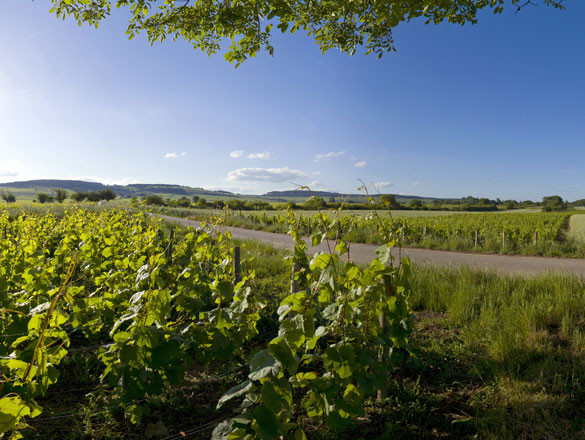

The vineyards of Bourgogne produce some great wines with a historical and international reputation. However, the region is not simply limited to its iconic appellations. In addition to its Village Premier Cru and Grand Cru AOCs, it also produces a range of wonderful Régionale and Village appellations to explore.
You will also find a full list of the Bourgogne’s Climats and lieux-dits on this page.
Check out the complete list of the 84 Bourgogne appellations.
However, your exploration has only just begun. Bourgogne wines have never before offered such high quality. Besides our range of internationally celebrated wines, try some of our lesser-known appellations where there are lots of surprises in store.
And for a fun way to find out more about the wines on offer, try out our “Which Bourgogne wine is right for me?” quiz, or check out Bourgogne Maps to take an interactive tour of the region.
Regionale Appellation ; Dénomination Géographique Complémentaire
APPELLATIONS SUR PLUSIEURS VIGNOBLES
31 juillet 1937
Reds - Pinot Noir.
Whites - Chardonnay.
Area under production*:
1 hectare (ha) = 10,000 m2 = 24 ouvrées
Reds: 231.96 ha
Whites: 108.77 ha
*in 2018
In 2017, the producers of the Régionale appellation "Bourgogne", located in Côte de Beaune and Côte de Nuits, obtained the additional mention "BOURGOGNE CÔTE D'OR", which thus becomes a Bourgogne with additional Geographical Denomination (Bourgogne identifiés). This name is reserved for red and white still wines produced within the 40 villages in Côte de Beaune and Côte de Nuits.

The red wines are cherry red in color with glints of dark ruby. The nose offers aromas of cherry, blackcurrant, and blackberry, with hints of grenadine and peony. In the mouth, they are rounded and delicate, with fine tannins and good fruit, leading to a fresh, light finish.
The white wines are pale yellow gold in color with silvery greenish-yellow hues. The nose offers hints of lemon, pear, and almond, along with acacia and hawthorn blossom, with notes of aniseed, peach, lime blossom, mint, and pineapple when the grapes are grown on soils tending more towards clay. A saline, lemony finish reveals aromatic touches of licorice and brioche.

Red: Its fresh and fruity taste will liven up your aperitifs when accompanied by a selection of cold cuts and cheese, a gourmet salad, or hot toast with whatever topping takes your fancy. Continue with grilled chicken, white meat, or roast beef, with a selection of vegetables. Simple soft cheeses would also bring out this wine. And why not finish off with a fresh raspberry cheesecake?
Serving temperature: 14-15°C.
White: These rounded yet vivacious wines make them a perfect pairing for an aperitif served with tapas, goose rillettes on toast, game bird terrines, and smoked salmon on toast with a lemon cream. They also make a great match for delicate fish in sauce, snails with garlic butter, or chicken supremes with parmesan, not forgetting all kinds of smooth and creamy soft cheeses.
Serving temperature: 10-12°C.

The vines of the Bourgogne Côte d’Or appellation extend across an area 65km long and between 1-2km wide, from Dijon to the Maranges. Geographically speaking, the Côte d’Or (golden slope) covers the Côte de Beaune and the Côte de Nuits.
The reputation of the wines grown here is such that the department was named after the area during the Revolution. Vines have been grown here since antiquity, and were subsequently expanded by religious orders, the Dukes of Bourgogne, the wine merchants.
In the 19th century, new means of transportation facilitated and modernized the sale. The establishment of the AOC system led winegrowers to build a hierarchy of terroir on the Côte, thus marking out specific areas and protecting their Crus.
In 2017, producers of the Régionale appellation Bourgogne from Côte de Nuits and Côte de Beaune were granted the extended name of “Bourgogne Côte d’Or”, their wines thus becoming Bourgogne Identifiés within the Régionale Bourgogne AOC, limited to specific geographical areas within the Bourgogne appellation.

The vines of the Bourgogne Côte d’Or appellation look like a diagonal fault line running from northeast to southwest, in a succession of slopes at between 200 and 450m above sea level.
The climate is temperate; hot and dry. The vines mostly face southeast on the foothills of the Côte, on soils made up of ancient alluvium: Clay scree and colluvium, clay silt and gravel at the ends of the combs.
